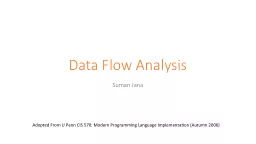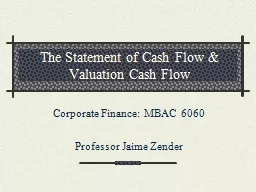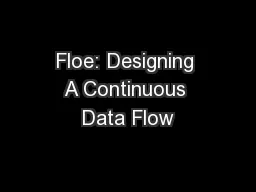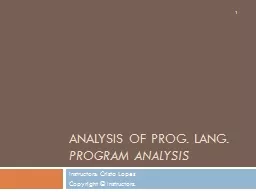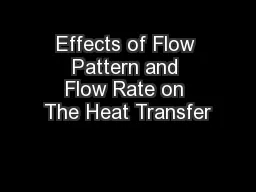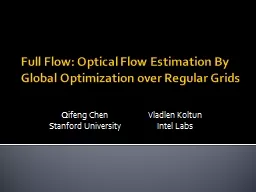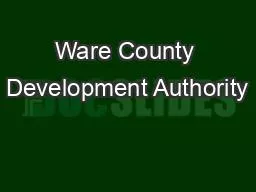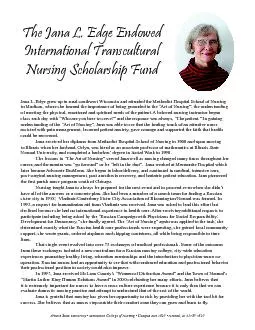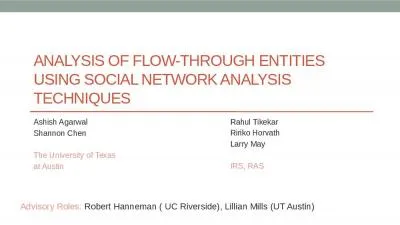PPT-Data Flow Analysis Suman Jana
Author : natalia-silvester | Published Date : 2018-03-19
Adopted From U Penn CIS 570 Modern Programming Language Implementation Autumn 2006 Data flow analysis D erives information about the dynamic behavior of a
Presentation Embed Code
Download Presentation
Download Presentation The PPT/PDF document "Data Flow Analysis Suman Jana" is the property of its rightful owner. Permission is granted to download and print the materials on this website for personal, non-commercial use only, and to display it on your personal computer provided you do not modify the materials and that you retain all copyright notices contained in the materials. By downloading content from our website, you accept the terms of this agreement.
Data Flow Analysis Suman Jana: Transcript
Download Rules Of Document
"Data Flow Analysis Suman Jana"The content belongs to its owner. You may download and print it for personal use, without modification, and keep all copyright notices. By downloading, you agree to these terms.
Related Documents

